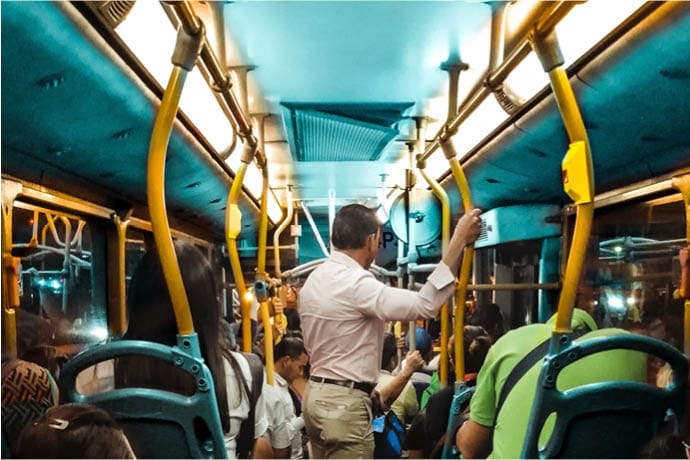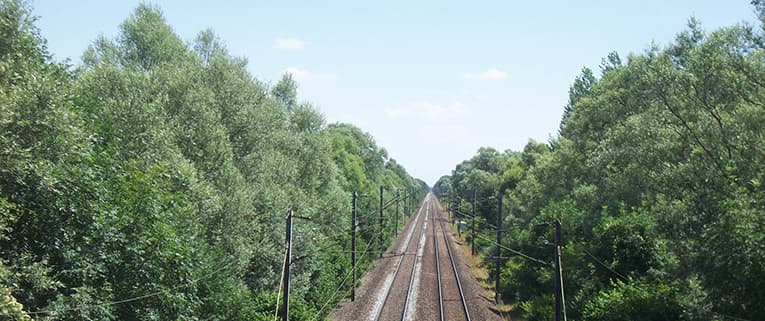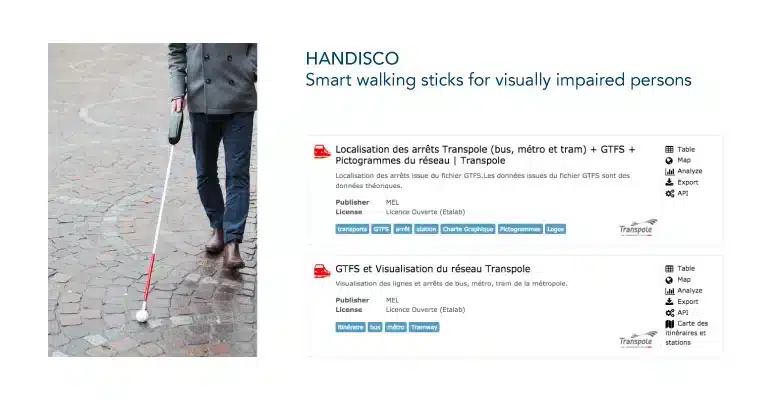Why Is It Important to Share Mobility Data?

Publishing and sharing mobility data can make it easier for people to move around their urban spaces.
If you live in an urban area, you’re probably aware of the transformation taking place in how you move around. Recently, a plethora of new transport services have been emerging. Some like Citymapper and Waze have been around for longer than others, while dockless bikes and free-floating scooters are making waves. As we move through what Richard Florida refers to as the third great economic transformation where societies shift to a knowledge economy based in cities, urban tech will keep arising to make them more efficient.
Urban transportation is up for a major evolution. Inherent to this shift is better availability of data to feed the abundance of smartphone transit apps, to provide government agencies with better information on the use of their transit infrastructure, and of course to improve services themselves. Opendatasoft provides data infrastructure for transportation operators in Europe. Keolis, RATP, and national operators like SNCF and SBB use our data platform to publish and share data. Transport data include more technical industrial data, and general mobility data. The transport data can come in industry-specific formats (usually GTFS and NETEX). These formats are meant to promote interoperability for data used for transport network operations. Datasets under this group can include precise network topographical information, pricing information, and timetables. The second group of mobility data include more simplified datasets. Bike share stations, air quality data, and transit line shapefiles are example datasets.
In reflecting upon different uses of transport data, we have identified two uses. They include improved operation efficiency and the creation of passenger services. In each case, either the operator itself or external partners can use data. They are an essential resource for collaboration, between departments or across the ecosystem.
Mobility Data Sharing Comes in All Different Forms
Mobility data have an endless number of possible reuses. Increasing operational efficiency and improving accessibility are only two examples. Data can also be used to advocate for more pro-transport policies such as improving safety, to develop pollution-reducing solutions, and to create new services to bring more people out of individual cars and into more sustainable options. It’s interesting to consider the wide swath of data that are needed in order to create these different services. Mobility data are not limited to highly technical datasets used by operators on a day-to-day basis, but also include open data such as weather data, pollution data, and data related to the location of different businesses and commerce.
For that, easy-to-use and easy-to-understand data are of the essence. Whether cities are involved in opening these mobility-related datasets, or other levels of government, they are a major step in inspiring new creative solutions adapted to any given community. Together, they provide an opportunity to collaboratively work towards new answers to make it easier for people to move around their urban spheres.
1. Improved Data Circulation
Improving data circulation within an organization simplifies the work of different teams. SNCF Réseau is the owner and manager of France’s national railway infrastructure. One of its departments works on keeping the tracks free of vegetation.

European and French regulation mandates that SNCF Réseau report on the status of its maintenance operations. For example, it must declare if, what, and where chemical products were used, and their progress on maintenance objectives set by SNCF. Previously, their reporting was done on paper. Now, it uses dynamic dashboards accessible to 50,000 users anywhere at anytime. Since their data sharing platform is connected to SNCF’s main industrial servers, data updates are more frequent and more accurate. With the new dashboards, decision-making is easier and reporting takes place more quickly. Thanks to improved data sharing, railway maintenance is more efficient than ever before.
2. Empowering a Partner Ecosystem
The Metropolis of Rennes is a hotbed for digital innovation, as the first city in France to launch an open data portal to power a digital ecosystem. Data2B is one of those startups that builds data products, often with data from the city’s portal. In Rennes, it works with mobility operators including Keolis, the provider who operates the local transportation network named STAR. The startup is also running an experiment with Cycleo, the local bike share operator. In each case, its solutions rely on effective data sharing, either directly with the operators or via open data, and cross-reference essential data that power its services.
In its project with Keolis, Data2B developed a predictive software aimed at improving the accessibility of local buses. It combines weather, event, and historic ticketing datasets to predict how full buses will be. Data come from a variety of sources, including STAR’s open data portal. The application allows riders to have a better idea of whether or not they should wait for a second bus with more space. In addition, STAR itself benefits in improved operational efficiency. The service provides more accurate readings on when and where more buses should be deployed in accordance with major events, but can also help STAR decide when to send a smaller bus. Using smaller buses can help reduce fuel consumption. Thanks to this data-powered service, both users and the operator experience their own respective benefits.
Data2B has also worked on an experiment with local bike-sharing provider Cycleo on an application to improve the efficiency of bike redistribution across its network. To help teams best decide where they should move bikes between stations, the application optimizes routes. It predicts which stations will be in high demand of bikes, or in high demand of spaces, and designs a more efficient route for teams moving bikes around. Not only is the network better optimized for users, but Cycleo itself also can save in time and fuel costs.
3. Mobility Service Creation
Transport providers and direct ecosystem partners are not the only actors who can share, consume, and reuse mobility data. In the European Metropolis of Lille (MEL) in the north of France, the metropolitan government publishes datasets such as the location of bus, metro, and tram stations, as well as the network routes. These datasets enabled Handisco to deploy its smart walking stick in Lille. This device helps guide the visually impaired to transit stations to make networks even more accessible, and even to stores, restaurants, and public spaces when the appropriate data are available. This type of service shows an innovative approach to data consumption, making the city itself more accessible to all.
 Copy to clipboard
Copy to clipboard
4. Improved Relationships with Users
A classic use of open data is transparency. In the case of major transport operators, it can improve communication and trust amongst users. SNCF and SBB, the national rail operators in France and Switzerland respectively, have embarked on large-scale open data projects to not only stimulate service creation, but also to better communicate with users.
In France, SNCF has published over 200 datasets, including several with the on-time performance of its trains, safety incidents, remuneration of agents by job type, and even data on the objects lost and found in its stations. Datasets on the company’s on-time performance are often picked up in the press, hinting at the success of its improved communication goal. In addition, the lost and found dataset shows the company’s service orientation, as it is a valuable resource for developers who could create a lost and found application. With improved transparency and the possibility of better service creation, SNCF is able to foster better trust and relationships with its users.
In Switzerland, the SBB has used its open data initiative to better engage with its community. The open data project manager is often actively involved in exchanges on Twitter, such as the thread below, discussing new datasets and challenging users to develop new solutions. Such engagement is a direct strategy for improving the communication and collaboration with users, and is an innovative approach for a national rail operator.
#SBBOpendata “Dont’t miss the train” is a #OpenData Challenge for #publictransport. We are looking for a gadget, which prevents people from missing the bus or train. #opendatach @openTdataCH pic.twitter.com/eafTdKsJMz
— christian trachsel (@chtrachsel) July 3, 2018
It All Comes Down to Data Sharing
We have looked at some different examples of mobility data reuse. Whether directly published and shared by a transport operator or by a municipality, better data sharing helps internal operations, and can improve network efficiency thanks to third-party service creation. Not only that, but new services indirectly related to the transportation services can improve mobility for certain groups of users. Even better, transport operators can reap the improved communication and relationships that come from transparency when embarking upon open data projects.
Opendatasoft is an actor in the mobility field in how we help operators, ecosystem partners, and cities open up mobility-related data. We help these actors share and cross-reference data in a simple yet powerful way. They become available via APIs and new services can be built. While some may think that transport data are a niche resource for highly technical experts, they are highly diverse in their very nature and can provide a strong benefit for all.

Data drives effective, well-functioning smart cities and helps build local ecosystems that bring together all stakeholders to meet the needs of the entire community. However, sharing data between stakeholders can be difficult - based on recent Gartner research we explain how urban data exchanges transform smart city data sharing.

Driven by the need to decarbonize, increase efficiency and meet changing customer needs, the transport and mobility sector is undergoing a rapid transformation. Data is at the heart of this, with data portals critical to building an effective, sustainable and customer-centric transport ecosystem.

Seamless mobility is at the heart of effective and popular cities. Sharing data across the mobility ecosystem increases transparency, collaboration and efficiency, enabling smart city mobility that benefits businesses, citizens, transport operators and city government.
